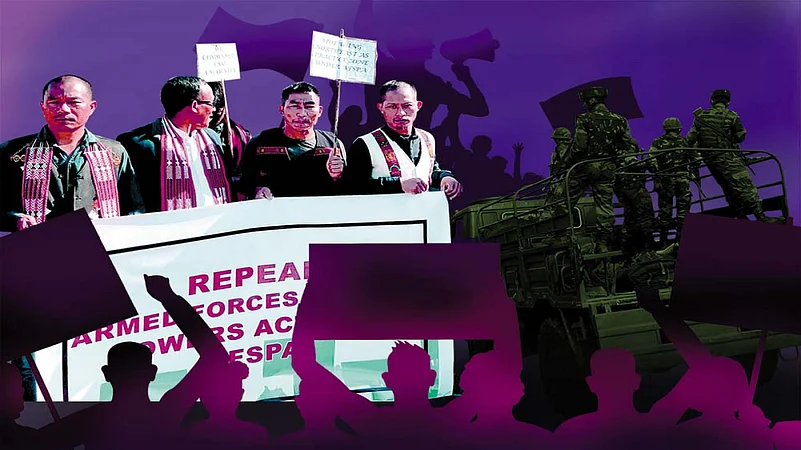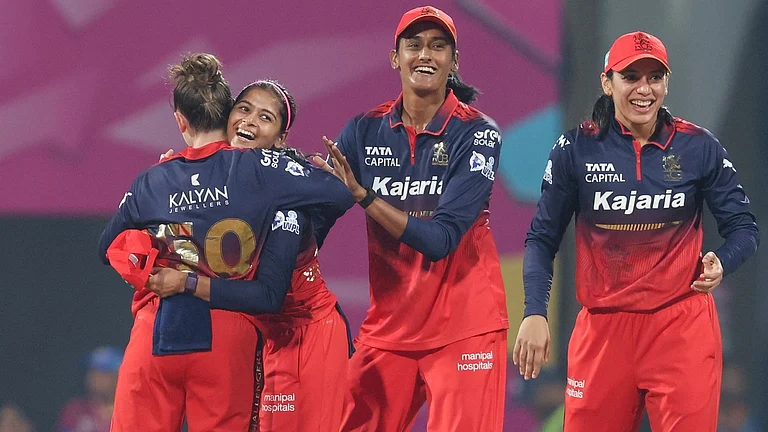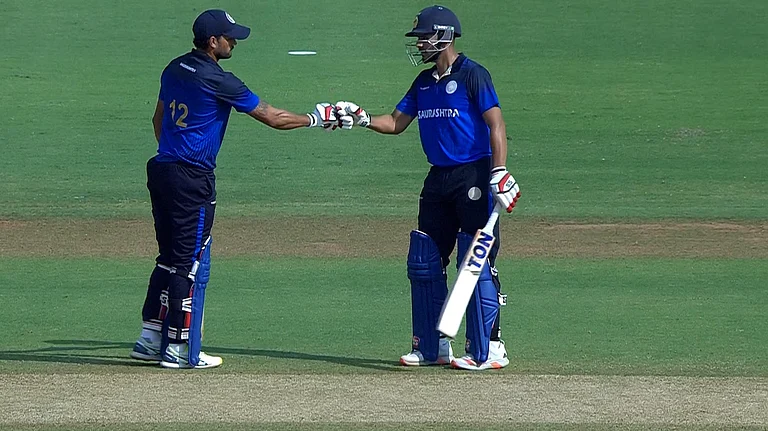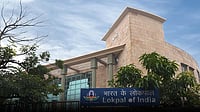The recent bloodshed at Oting, Nagaland, is an ominous reminder of the unbridled violence that has vulgarised the State’s claim over “legitimate use of physical force”. We all know that the capacity to exercise violence is at the heart of the State as an institution. It is something that enables it to sustain itself. Police, as an instrument to “preserve order”, exercises that force. We encounter it in our quotidian world—from fighting crimes to regulating traffic or controlling crowds and maintaining order, it exercises that power to restrain and discipline. But none embodies the ultimate expressions of that corporal might of the State as the military does. As a war machine, it is specifically trained and maintained to destroy and kill. Since the military has that vital capability to use physical violence, it can also institute and/or re-institute the State itself. Military coup or coup d’état is a reminder of that potential. That is why, the military as an “apolitical” institution is not only idealised but it is also restricted from involvement in the internal affairs of the State.
The adage, “Julius Caesar crossing the Rubicon in 49 BC was the beginning of the end of the Roman Republic” is a historical signpost that speaks of how the military could transform the very character of the State. Incidentally, Gandhi knew of this intimate connection between violence and the State, and the military as its embodiment. Thus, “India of my dreams”, he said, would be a country with the “smallest army imaginable”. Yet, not only does India maintain one of the largest military forces in the world today, but in defiance of the traditions of keeping the military away from involving in the domestic politics and affairs, the Indian State crossed its own Rubicon way back in 1958 when it specifically enacted the notorious Armed Forces (Special Powers) Act—popularly called AFSPA—for India’s Northeast. This was followed by two versions of the same in 1983 (for Chandigarh and Punjab) and 1990 (for J&K).
This piece of legislation, which was inaugurated on May 22, 1958, as a presidential ordinance, was an incarnation of a similar one used by the colonial British against the Quit India Movement in 1942. Unlike many “special” laws, AFSPA enables the military to get involved as an instrument of administration. And as expected of the military, it is done with the power to destroy and kill. It also empowers to engage in pre-emptive strikes against places from where “armed attacks are likely to be made” or fire upon people, including “causing of death”, for carrying not only “firearms” or “weapons” but also “things capable of being used as weapons”, including on the basis of “suspicion”! Such powers are expected and legitimate for the military. Once war is declared, it is an “either he or I” situation; the intent of the other, the enemy, to harm you is a given. Hence, the powers endowed by AFSPA—shoot to kill, destroying “arms dump” or “fortified position” or “shelter”, including preemptive strikes—are nothing unexpected, as far as military operations are concerned.
But then, there is no official declaration of war for the military to exercise these powers. In fact, while upholding the constitutionality of AFSPA in 1997, the Supreme Court observed that the “disturbed condition” that the AFSPA invoked was not “due to armed rebellion”. In that judgment, which is considered by many as one of the most regressive in the history of the highest court, the constitutional bench had insisted that the situation might not be of such a magnitude so as to say that it constituted a threat to national security. There is something deeply discriminatory and exclusionary—even racist—about this “disguised war”. The Maoist insurgency in central India has been described as the “greatest security threat”. Yet, proponents of AFSPA insist that this Act cannot be used in these areas as these (Maoists and people in areas affected by the unrest) are “our own people”. Truly, AFSPA is meant for some people in some specific areas, beginning with India’s Northeast, a region wherein, as some say, “Southeast Asia begins”. The cultural-civilisational-and-racial markers are undeniable. But AFSPA is not officially seen as such. It is, as the Supreme Court insisted, to utilise the military “in aid of” the civil authority to maintain “law and order”. But, it insists, AFSPA is not like calling out the military to assist the civil authority to maintain public order under CrPC.
ALSO READ: Poetry | New Terror in Nagaland
It’s worth reminding that given the enormity of the wealth and power of the state, especially its capacity to use physical force, there is a need to restrict such powers. This is what the “rule of law” as “institutional restraints on power” seeks to perform. For instance, in criminal jurisprudence, there are universally accepted ideas and concomitant practices that seek to defend a person who has been accused of committing a crime. Besides the separation of powers and responsibility between prosecutor, judge and executioner, the principle of the “presumption of innocence” (that an accused shall be assumed to be innocent until proven otherwise in a court of law) and “fair trial” (ideas that, among others, an accused shall have the right to get all the opportunity to defend herself/himself) are some of the known and well-established aspects of criminal jurisprudence. As one can see, the powers given to the military under AFSPA are not subjected to these familiar aspects of criminal jurisprudence. In fact, one cannot even prosecute any personnel until and unless it is sanctioned by the central government (Section 6, AFSPA). And, they are also not subjected to the Geneva Conventions as they are not at war.
Insofar as these familiar norms which seek to domesticate the violence of the State and war are withdrawn, AFSPA is an “exception”, a condition wherein norms have been withdrawn. It’s a “lawless law”, as Laishram Achow, the then MP from Manipur, has termed it when it was introduced in the Lok Sabha on August 18, 1958. It was supposed to be a “temporary measure”. But it has survived till date. In that, it’s an exception that has been normalised and become a norm. Besides, AFSPA has become the embodiment of a prejudiced set of entrenched attitudes towards certain sections of the population, and their issues, in this country. Such prejudices have managed to defeat the voices against AFSPA, including the moral kind in the form of the longest fast in human history by Irom Sharmila. Former Union minister P. Chidambaram had termed it “obnoxious” while former Prime Minister Manmohan Singh had hinted it of being an “inhuman” act. Similarly, various international and national bodies have asked to repeal AFSPA, including by the Justice Jeevan Reddy Committee which was specifically instituted by the PMO in 2004.
Just as this legal fiction survives to govern over the people as a prose, it has scripted numerous tragedies marked by blood and tears, a trail of murders, forced disappearances and sexual assaults—mostly, if not almost all, without any trace of justice being delivered. The latest massacre at Oting reminds us of the intimacy between AFSPA and the violence that it produces. But whether it shall prick the conscience of those who have hitherto defended the legal fiction to finally scrape it or further strengthen through mutation to suit the “new frontiers of war”, only time will tell. But the memory of Oting tragedy shall be etched deep in the inner psyche of those brutalised people to both inform and constitute who they are.
(This appeared in the print edition as "Violence of a Legal Fiction")
(Views expressed are personal)
ALSO READ
Angomcha Bimol Akoijam is an Associate Professor at the Centre for the Study of Social Systems, School of Social Sciences, JNU


























